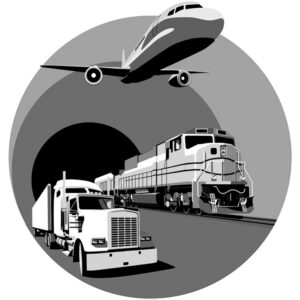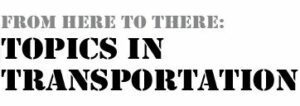Written on: June 1, 2014 by SprayTM

 I recently read that the U.S. Occupational Safety & Health Administration (OSHA) was filing suit against a major telecom company for disciplining several employees after they submitted complaints about hazardous working conditions or filed claims for injuries sustained on the job. As I read the article, I wondered aloud how the culture within this company had become so strained that: (1) the company took these types of actions against its own employees; (2) the employees reported these issues to OSHA, rather than reporting them to the company first; and (3) if the employees did report these safety issues to the company first, the company didn’t take swift and decisive action before the situation deteriorated to the present point.
I recently read that the U.S. Occupational Safety & Health Administration (OSHA) was filing suit against a major telecom company for disciplining several employees after they submitted complaints about hazardous working conditions or filed claims for injuries sustained on the job. As I read the article, I wondered aloud how the culture within this company had become so strained that: (1) the company took these types of actions against its own employees; (2) the employees reported these issues to OSHA, rather than reporting them to the company first; and (3) if the employees did report these safety issues to the company first, the company didn’t take swift and decisive action before the situation deteriorated to the present point.
This assumes, of course, that there are no underlying issues, such as wage disputes, that are being masked under the guise of safety. Legitimate or not, any complaints regarding safety and compliance should be taken seriously. Companies should strive to develop a culture of mutual respect and understanding and set aside their differences when it comes to safety and regulatory compliance. Companies are encouraged to develop eyes and ears at all levels to help promote the well-being and safety of all persons in the workplace.
Shared Responsibility
Safety and compliance is a shared responsibility. Although OSHA mandates in the General Duty Clause that employers must “…furnish to each of his employees employment and a place of employment which are free from recognized hazards that are causing or are likely to cause death or serious physical harm to his employees,” employees have a responsibility to make management aware of hazardous conditions or non-compliance issues that may have arisen and gone unnoticed.
Employees need to help management provide a safe working environment by actively participating in safety and compliance program development, collectively developing and attending the required training, participating in audits and reviews and, in short, becoming the company’s eyes and ears. It is foolish on the part of corporate management to assume that input from the rank and file is not needed or should not be given equal consideration. Likewise, it is foolish on the part of employees to assume that they are not, in large measure, responsible for their own safety or regulatory compliance.
With respect to the transport of dangerous goods, the U.S. Dept. of Transportation (DOT) prescribes penalties under 49 CFR §171.1(g) for
…each person who knowingly violates a requirement of the Federal hazardous material transportation law, an order issued under Federal hazardous material transportation law, subchapter A of this chapter, or a special permit or approval issued under subchapter A or C of this chapter [and] is liable for a civil penalty of not more than $75,000 for each violation, except the maximum civil penalty is $175,000 if the violation results in death, serious illness or severe injury to any person or substantial destruction of property.
A “person” is defined in 49 CFR §171.8 as
…an individual, corporation, company, association, firm, partnership, society, joint stock company; or a government, Indian Tribe, or authority of a government or Tribe, that offers a hazardous material for transportation in commerce, transports a hazardous material to support a commercial enterprise, or designs, manufactures, fabricates, inspects, marks, maintains, reconditions, repairs, or tests a package, container, or packaging component that is represented, marked, certified, or sold as qualified for use in transporting hazardous material in commerce.
However, it is important to note that civil penalties are very rarely assessed against an individual who is acting in good faith on behalf of a company or corporation. In most cases, civil penalty action is taken against the company or corporation responsible for the violation of the Hazardous Materials Regulations (HMR).
Personal & Professional Responsibility
I’ve found that those companies that have the best compliance and safety records foster a culture in which there is a deeply engrained sense of personal and professional responsibility and corporate management and employees are committed to their own safety, the safety of others in the workplace and compliance with regulatory requirements.
In every case, employees are empowered to halt production or withhold shipments of dangerous goods if there is any unsafe act or process or if packages of dangerous goods are not in full compliance with regulatory requirements or corporate policies. Equally true is the fact that these companies have developed and implemented highly effective policies, procedures and training programs with the assistance of employees at every level. These companies also freely share their ideas with suppliers as well as competitors and participate actively in non-governmental organizations and trade associations. These companies continually look for opportunities to further refine and improve their programs (see also Topics in Transportation in Spray, May 2013).
Because employees, supervisors and managers each receive initial and frequent recurrent training on various safety, environmental management and hazardous materials transportation-related topics, the collective workforce has become quite adept at identifying hazards and non-compliant situations and recognizing trends that could lead to an accident or incident. It’s no wonder that these companies are among the most efficient and successful in the world and every facility is extremely clean and well-managed.
Based on my many observations, there seems to be a direct correlation between the cleanliness and organization of a facility and the company’s level of compliance. Invariably, these facilities have developed and implemented a housekeeping plan whereby one or more persons are assigned to, and held accountable for, housekeeping or other duties in a specific work area, laboratory or warehouse aisle. For example, the responsible employee’s photo is posted in a work area and others are directed to contact that person if the conditions are less than ideal.
Recommendations
Companies are strongly advised to think creatively and find ways to develop and foster a safety and compliance culture based on a deep and true commitment to the collective safety. This change in culture begins with management and requires input from employees at all levels.
Companies are encouraged to, with the assistance of safety or management review committees (made up of employees at every level) and/or consultants, conduct a baseline review of the organization’s safety and compliance programs, training needs and methods and processes whereby employers and employees communicate safety and compliance concerns and requirements to one another. Most importantly, companies should implement methods and processes for communicating regulatory and policy requirements in a timely and efficient manner and for receiving feedback from persons at all levels of the organization. Organizations should give careful consideration to all safety concerns and allow them to be freely expressed without fear of reprisal or sanction. Likewise, employees should be encouraged to express these concerns in a responsible manner and offer reasonable suggestions for improvement.
All employees should receive detailed training and instruction and be empowered to make safety and compliance-related reports or decisions that could halt or slow production or shipping schedules. Training should be developed and reviewed by employees at every level within the company to ensure that the training is relevant, efficient and makes sense. In addition, companies are encouraged to offer training more frequently, and in smaller doses, to ensure that the training is more efficient and employees are not overwhelmed by the amount of information provided.
Companies should encourage employees throughout the organization to actively participate in the development and delivery of internal and external compliance reviews, audits and investigations so that there is transparency and a deeper sense of ownership of the process and results. Companies that follow these approaches are almost certainly going to develop a cadre of safety and compliance advocates—the eyes and ears needed to improve productivity, foster goodwill and reduce the potential for costly injuries, accidents or penalties for non-compliance.
For a list of additional suggestions and ideas, contact the author at 310-370-3600 or refer to previous editions of Topics in Transportation in Spray.